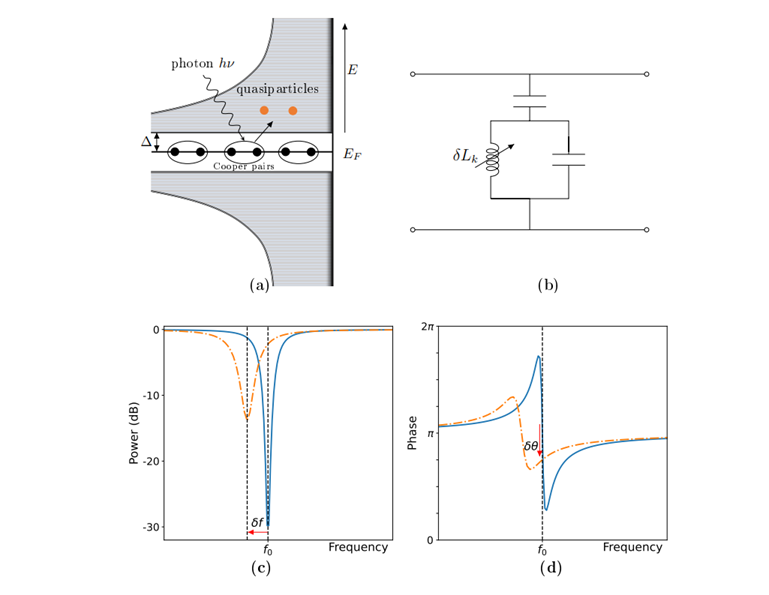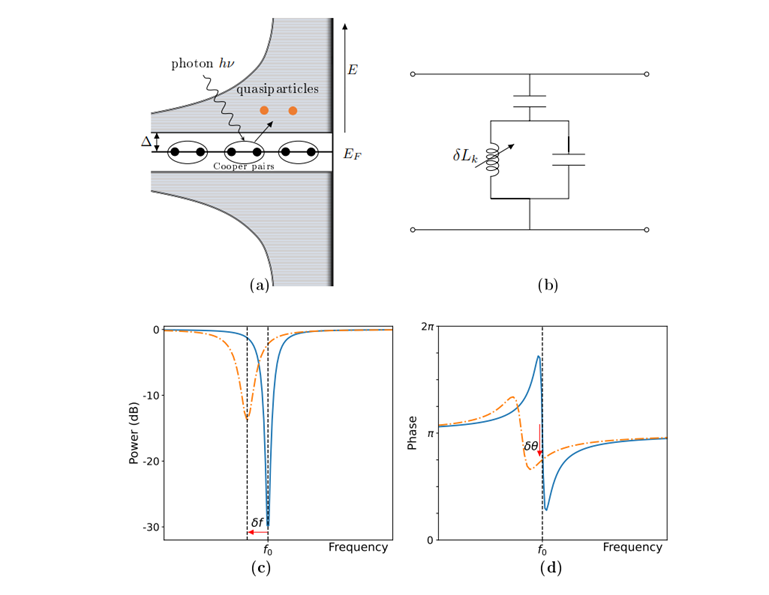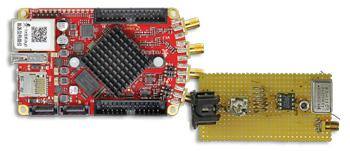Developing a Low-Cost Readout System for Cryogenic Detector Arrays Using the Red Pitaya Board
- Posted by
 Red Pitaya Team
, February 12, 2025
Red Pitaya Team
, February 12, 2025

Cryogenic detectors, such as Microwave Kinetic Inductance Detectors (MKIDs), are central to groundbreaking advances in astrophysics, particle physics, and quantum technologies. However, implementing these detectors in large-scale arrays remains challenging due to the complexity and high costs of traditional readout systems. Researchers have now developed a low-cost readout system based on the Red Pitaya FPGA platform, enabling precise, efficient, and affordable signal processing for MKID arrays.
The Working Principle of MKIDs
Microwave Kinetic Inductance Detectors operate on the principle of kinetic inductance, where photons with energy hν≥Δh break Cooper pairs in a superconducting film. As shown in Figure (a), this process creates quasi-particles that change the kinetic inductance of the material.
To detect these changes, MKIDs use a microwave resonant circuit, typically represented as a parallel LC circuit coupled to a feed-line, as seen in Figure (b). When photons interact with the detector, the resonance frequency shifts , and the phase of the transmitted probe signal changes (). These variations are measured as changes in amplitude and phase close to the resonance, as simulated in Figures (c) and (d).


Designing the Red Pitaya-Based Readout System
Traditional MKID readout systems rely on expensive, customized hardware to manage large detector arrays. To provide a cost-effective alternative, the researchers utilized the Red Pitaya FPGA platform, a versatile and open-source system capable of real-time signal generation and processing.
The readout system operates using frequency-division multiplexing (FDM), where multiple probe signals—each tuned to a specific resonator—are generated and transmitted to the MKID array. Any interaction with photons alters the amplitude and phase of the probe signal, enabling precise detection of photon events.
System Architecture
The system design is outlined in the following image. A local oscillator generates the base frequency, while the Red Pitaya's FPGA handles signal generation and processing. The key steps include:
- Signal Generation: The Red Pitaya generates I/Q-modulated signals via its 14-bit DACs.
- Mixing and Upconversion: A local oscillator upconverts these low-frequency signals to the GHz range, matching the MKID resonant frequencies.
- Combining and Analysis: The signals are combined and sent to the MKID array, where they interact with the detectors. The modified signals are analyzed using a spectrum analyzer to extract amplitude and phase information.


System Performance and Validation
The Red Pitaya-based system was characterized and validated to ensure compatibility with MKID readout requirements. Key performance parameters, such as bandwidth, noise, and channel isolation, were carefully tested.
- Bandwidth: The system supports a sampling rate of 125 MSPS, enabling the processing of high-frequency signals.
- Noise Performance: Input noise was minimized, with a standard deviation below 0.8 mV, ensuring precise signal acquisition.
- Channel Isolation: Effective isolation between signal paths minimizes crosstalk, maintaining signal integrity.
The results confirmed that the system delivers reliable performance, making it suitable for large-scale MKID arrays.
Applications and Future Directions
This low-cost system has immense potential for applications in astrophysics, quantum computing, and other scientific fields where MKIDs are deployed. By offering an open-source and modular solution, the Red Pitaya-based design lowers the barriers to implementing large-scale cryogenic detector arrays.
Future work will focus on testing the system under cryogenic conditions and refining its firmware to further improve performance. Enhancements may also include integrating multiple detection systems for extended functionality in long-term deployments.
Conclusion
The development of a low-cost MKID readout system using the Red Pitaya FPGA platform represents a significant step forward in cryogenic detector technology. By combining flexibility, affordability, and precision, this system paves the way for scalable implementations of MKID arrays in cutting-edge research. The open-source nature of Red Pitaya ensures that researchers can adapt and expand this design to meet the evolving needs of their applications.





